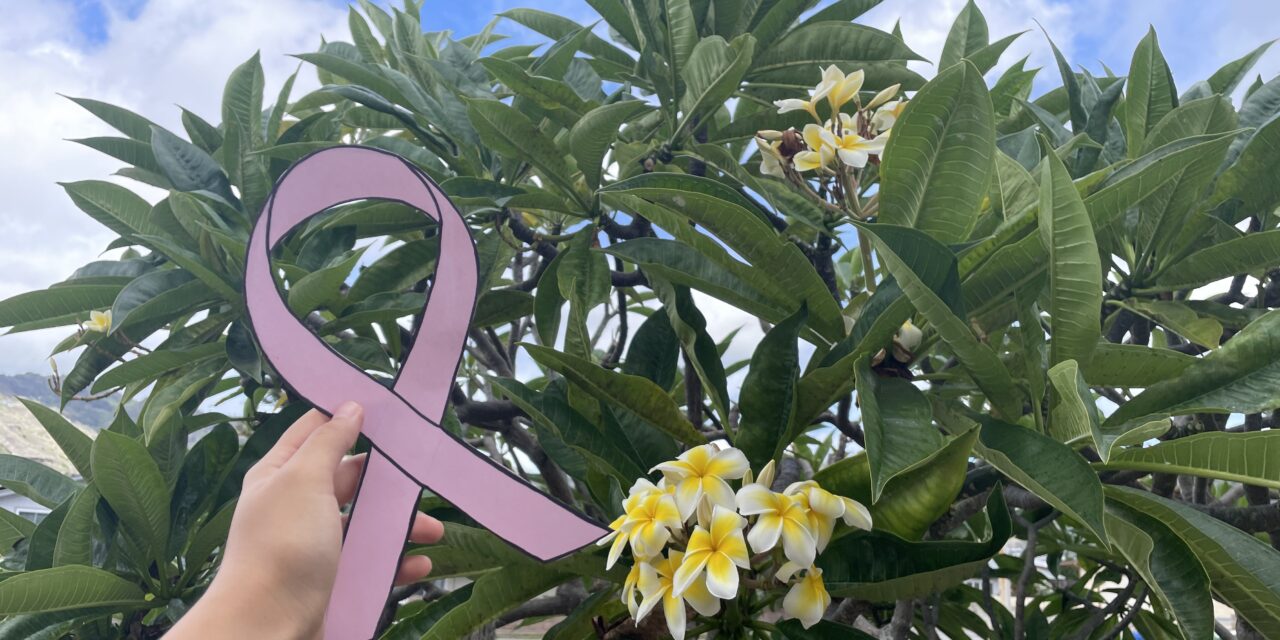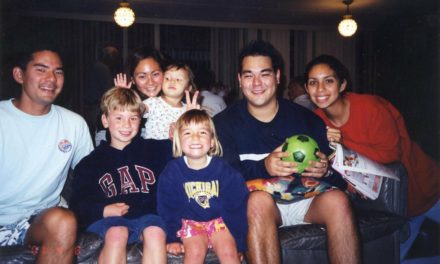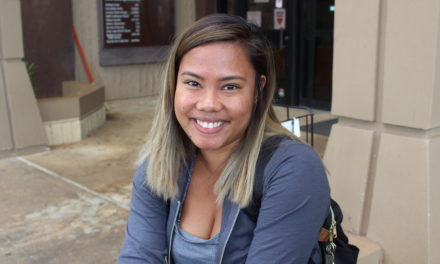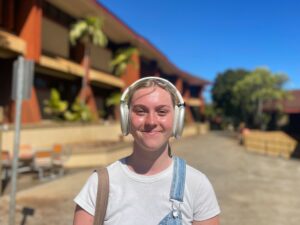October is Breast Cancer Awareness Month and people across the Nation are coming together to spread awareness and fundraise for the cure. (Photo by Cameron Enomoto)
By Cameron Enomoto | Staff Writer
When my grandmother was diagnosed with breast cancer in 2012, my family had no idea what to do. We didn’t know if she had to undergo chemotherapy, surgery, or radiation therapy. We were terrified and so was she.
Fortunately, the specialist doctors who worked with us were informative and empathetic. They explained that the cancer was still in the early stages when it was noticed so we had a number of options for treatment, though my grandmother decided to try radiation therapy. According to the CDC, radiation therapy kills cancer cells using high-energy rays similar to X-rays. After every session, my grandmother said that she felt tired like her energy had been drained. In addition to that, she said that the targeted area of the breast was often red. Each treatment took around 30 minutes and she had 2 sessions a week. It had taken a couple of weeks to see progress in the cancer subsiding and after a few months, she was finally cancer free.
After my grandmother had successfully beaten cancer, my family was ecstatic. I told all of my friends and teachers that she was going to be okay, and many of them expressed their shared joy. However, when I mentioned that she had breast cancer versus skin or lung cancer, there were some hesitant responses and the conversation ended there. At the time I didn’t understand why people backed off from this topic, though I realize now that it had to do with the stigma around breast cancer.
There are many misconceptions about breast cancer and people who are diagnosed often wait to seek treatment out of fear. A research study completed by Chinese scientists in June found that 76.7 and 8.7% of breast cancer survivors reported moderate and high stigma levels. A separate study conducted showed that patients waited an average of 50 days before seeking medical treatment after symptoms had surfaced and 35.8% of patients waited over 90 days.
Ultimately, spreading awareness about the symptoms of breast cancer and how to support survivors will help in relieving the negative effects of stigma and create a more open environment for people to share experiences and seek treatment. Breast Cancer Awareness Month, this October, is a big part of that. Talking confidently about breast health can be awkward, but if it can save a life then staying silent is ignorant. While women are much more likely to get breast cancer, men should also be encouraged to speak out about their stories.
Some symptoms of breast cancer include a lump in the breast or underarm, irritation of the breast skin, and redness around the nipple area. The CDC has a more detailed list of symptoms, but it is best to consult with a medical professional instead of self-diagnosing. If you or a loved one suspect that you may have breast cancer, seek professional help immediately.
Susan G. Komen, a breast cancer organization, helps to fund breast cancer research, support patients, and uplift survivors. There are multiple resources available on the site for those who are interested in making a donation, volunteering, or learning more about breast cancer. Additionally, the National Breast Cancer Foundation has fundraising options available for schools, sports teams, and workplaces.
The American Cancer Society started Making Strides Against Breast Cancer to unite communities to end the fight against breast cancer. There will be a walking event held at Keʻehi Lagoon Beach Park on Saturday, October 22. To sign up, visit the Making Strides of Hawaiʻi website.
When battling any kind of illness, it is okay to rely on others and seek support. Don’t hesitate because you’re afraid. There will always be people who are willing to help.






